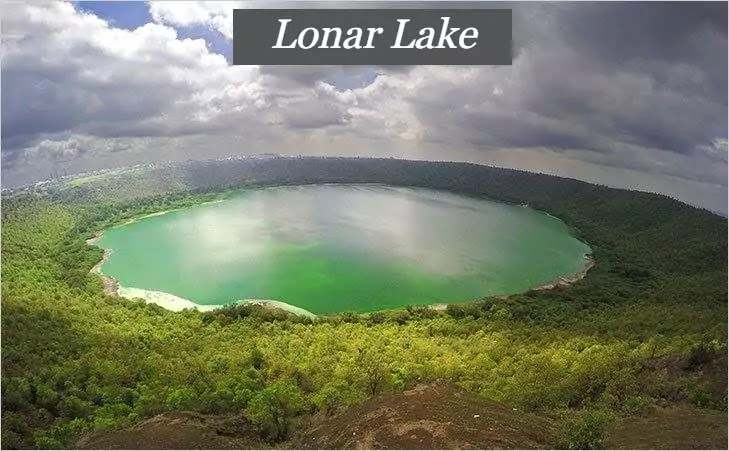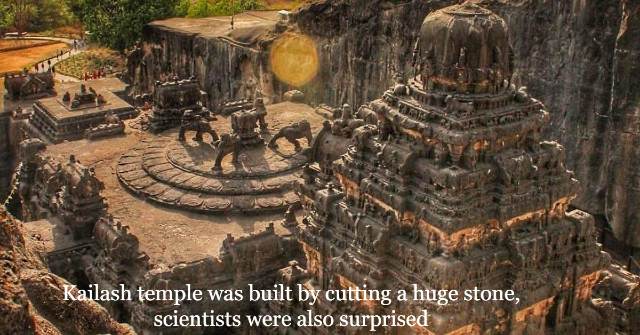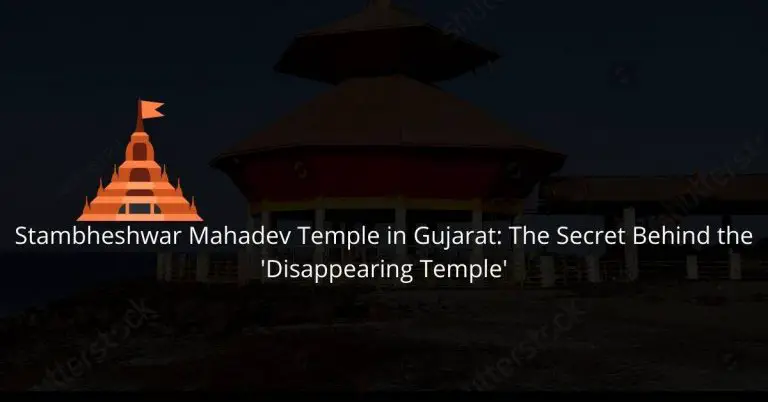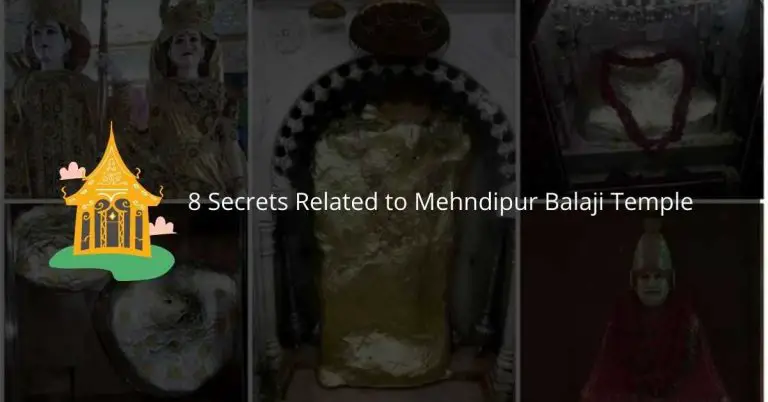Lonar Lake is the most mysterious place in India
Lonar Lake is located in the Buldhana district of Maharashtra. This lake is a notified National Geographical Heritage Monument. Lonar Lake is 500 km away from Mumbai in the Buldhana district. These are real examples of terrestrial impact craters formed in basaltic bedrock, which has attracted the interest of many space scientists and the interest of NASA. Today we will discuss a 1.8 km diameter impact crater i.e. Lonar Crater Lake.
There is only one such salt lake in the world which is formed in basaltic bedrock due to meteor impact. Friends, the estimate of the exact age of this crater varies, but in general, this crater lake is considered to be 52,000 years old. Lonar Lake is a Valuable Analog Site that is essential for reading the degradation process and understanding the impact crater made on ancient Mars.

There are many such theories around this Lonar lake, which scientists believe originated from the volcano, but some say that it was formed by a meteorite hitting the earth. Along with this debate, Lonar Lake in Maharashtra is a National Zoological Heritage Site. It has been given the tag of National Zoological Heritage by the Zoological Survey of India.
There is an ecological and scientific treasure at this place, which is close to the city named Lonar, but friends, what is the mystery that makes this lake a rare lake not only in India but globally. Apart from this, it is believed that “Lonar Sarovar” has also been mentioned in Ramayana. Let’s start knowing some interesting things about Lonar Lake.
.
Lonar lake
Friends Lonar is named after Damon ‘Lonasure’. There is only one hyper-velocity impact crater present here which is made on a basaltic rock. The crater is called those massive mattresses or pitches that are formed by the collision of a moving object in space, for example, Moon’s atmosphere being lighter than Earth’s rocks and asteroids easily enter the space there. In this way, many massive craters have been formed.
According to the report, the age of this crater is about 52,000 years, but on how it was formed, it is said that a meteor hit the earth at 90000 km per hour i.e. about 42 times faster than the speed of sound. The weight of a meteor in this was 2 million tons, which is about 13,000 times more than the weight of an average blue whale. Due to its impact, a crater 1.8 km wide and 150 meters deep was formed, around which a forest has formed over time.
These craters are in an oval shape which indicates whether the asteroid, meteoroid, or comet that hit Earth had impacted it at an angle of 35 to 40 degrees.
The water present in this lake is alkaline but the surprising thing is that there are two distinct water regions in this lake that do not mix with each other, the outer region of the lake is called the neutral region, which has a pH of 7 i.e. the same as our normal potable water. The inner region of the lake is alkaline i.e. its pH level is 11. Both are unique regions and are famous for different flora and fauna.
Monitor lizards are among the most permanent reptiles found in this crater lake. Along with this many species of non-symbiotic nitrogen-fixing microbes are found here. Apart from this, Lunar Lake has forced NASA scientists and Geological Survey of India officers to find answers to many questions.
How can this lake be alkaline and saline at the same time? Why is it that this lake contains those microorganisms which are rarely found in any other region of the world? Why does the compass stop working in some parts of the crater and what is inside this lake? Scientists are always struggling to find answers to all these questions, but these questions are not over because this lake keeps showing some new phenomena at some point or the other.
.
Lonar lake turned pink
Friends Lonar is named after Damon Lonasure. There is only one hyper-velocity impact crater present here which is made on a basaltic rock. The crater is called those massive mattresses or pitches that are formed by the collision of a moving object in space, for example, Moon’s atmosphere being lighter than Earth’s rocks and asteroids easily enter the space there. In this way, many massive craters have been formed.
According to the report, the age of this crater is about 52,000 years, but on how it was formed, it is said that a meteor hit the earth at 90000 km per hour i.e. about 42 times faster than the speed of sound. The weight of a meteor in this was 2 million tons, which is about 13,000 times more than the weight of an average blue whale. Due to its impact, a crater 1.8 km wide and 150 meters deep was formed, around which a forest has formed over time.
.
Metrology mythological relevance of Lonar crater
The lake built in the middle of this crater is also associated with Indian belief. This lake is referred to as “Panchapsar” in Valmiki Ramayana and later Epic poet Kalidas also wrote about it. Kalidas has mentioned this lake as “Panchapsar” in his famous text Raghuvansh, the historical name Panchapsar is due to those five defense teams. that feeds the lake
According to beliefs, it is believed that when Lord Rama was returning from Sri Lanka to Ayodhya, he showed Goddess Sita something by pointing at him while riding on a plane. According to the opinion of the researchers, Lord Ram was preferring Lonar Lake itself.
According to the stories in Daitya Sudan Temple Lonar, Lonasur was a demon who lived in the saltwater of the crater. This demon was killed by Lord Vishnu in Lonar Lake. Inspired by this story, Daitya Sudan Temple was built by the King of Chalukya Kingdom. This temple, built 6th century, remains an example of finance sculptures and impressive architectural fitness of ancient times even today.
Apart from this, a suitable mention of Lonar Crater is also found in the book Ain-i-Akbari written in the Mughal Era Later Period. So this was the story of Maharashtra’s mystery lake Lonar Lake, what is your opinion about this whole issue, definitely tell us in the comment section.
FAQ:
1. Where is Lonar crater lake situated?
The Lonar Crater Lake is in a very small town called Lonar in Maharashtra, India. This crater is the only saltwater lake in India and it is also the world’s largest extinct impact crater.
2. how Lonar lake was formed?
Lonar lake is one such salt lake that is formed in basaltic bedrock due to meteor impact. Friends, the estimate of the exit edge of this crater keeps changing, but in general, this crater lake is considered to be 52,000 years old. There are many theories around Lonar Lake that scientists believe have a volcanic origin but some say that it was formed due to a meteor’s collision with the earth.
3. Are there fish in Lonar lake?
There are no fish in Lonar Lake but monitor lizards are one of the most enduring reptiles found in this Lonar Lake. In addition, several species of non-symbiotic nitrogen-fixing microbes are found here.
4. Why Lonar lake water is salty?
The reason why Lonar lake water is salty is because of the presence of minerals in the lake water. It is a saline-alkaline lake which is a hypersaline lake. It is a hypersaline lake because of its high content of sodium chloride and other minerals. The lake contains a very high level or percentage of saline.
- World’s most terrible cellular jail (Kala Pani) its complete history
- The dark chapters of Angkor Wat world’s largest Vishnu temple pushed him into oblivion.







